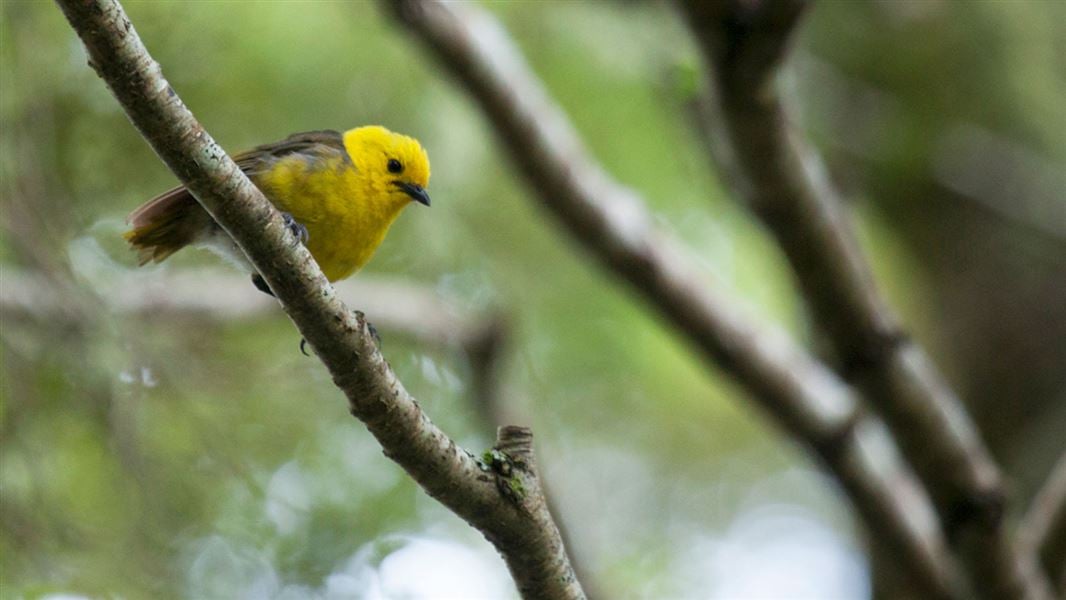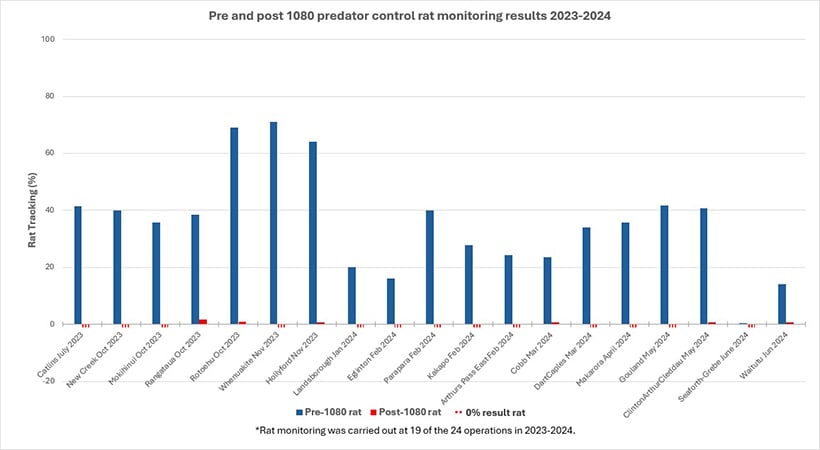
Introduction
DOC’s predator control programme is achieving its best results ever due in part to improved timing for operations.Date: 28 August 2024
The programme protects native wildlife and forests on public conservation land from the devastating impacts of rats, stoats and possums, and plays a key part in stopping threatened species from going extinct.
DOC delivered 24 aerial predator control operations across 735,000 ha in the past year. Monitoring has revealed exceptionally good results from this work, with rats consistently reduced to undetectable or very low levels and stoats and possums effectively controlled. Mice were also routinely reduced to low levels, giving relief to native insects and lizards.
Peter Morton, DOC’s predator control programme manager, says the improved results are in part due to changes to the timing of operations in areas where beech forest seeding (known as a ‘mast’) last year caused a surge in rodent and stoat numbers.
“Previously, during beech masts, we timed operations for late winter and spring to protect nesting forest birds from predators. This generally worked well, but we’d get poorer results in times of heavy seeding such as in 2019.”
A moderate beech mast occurred in 2023 affecting large parts of the South Island and Ruapehu. While the seed provides a bounty for insects and birds, it also causes rodent and stoat numbers to soar and puts native wildlife in peril.
“We tested new timings to avoid the ‘food glut’ when beech seed is on the ground and rodents have plenty to eat. This meant running operations either before the seed hit the ground or after it had gone, when rodents were hungry,” says Peter Morton.
The changed timing saw predator control operations run in the 2023 summer before the beech seed fall in autumn, as well as the following summer and autumn after the seed had been eaten or germinated.
“We took a measured risk trialling this different approach, but it proved highly successful with consistently good results – giving our vulnerable native birds, bats and other wildlife the best chance to thrive,” says Peter Morton.
“Regular reviews using the latest research is an important part of the drive for continual improvement in predator control work. This new approach will stand us in good stead for the next big beech mast when predator numbers surge again.”
DOC controls predators on a sustained, rotational basis at 67 forest sites across Aotearoa over about 1.8 million ha or 20% of public conservation land – on average over about 600,000 ha per year.
The programme uses the most effective predator control tools available, such as biodegradable 1080 toxin and large-scale trapping, to protect the highest-priority populations of vulnerable native species and forests.
Long-term monitoring shows that sustained predator control helps ecosystems to recover. Populations of native birds, bats and other wildlife increase, vulnerable plants grow back, and the forest canopy is healthier.
Pre and post 1080 predator control rat monitoring results 2023-2024

Rat monitoring was carried out at 19 of the 24 operations in 2023-2024
Contact
For media enquiries contact:
Email: media@doc.govt.nz